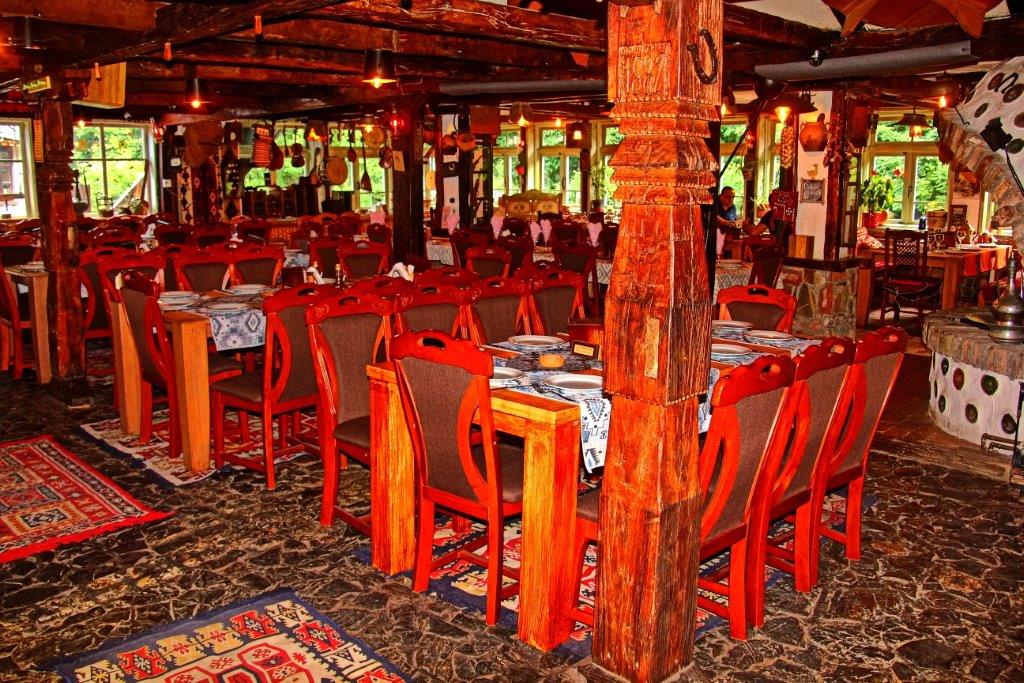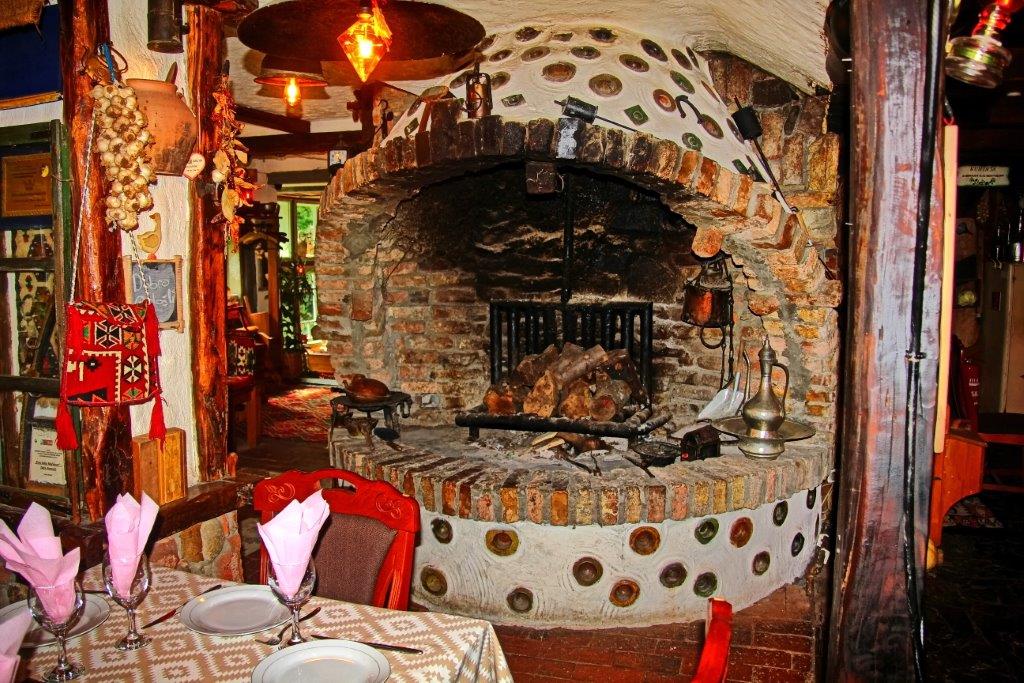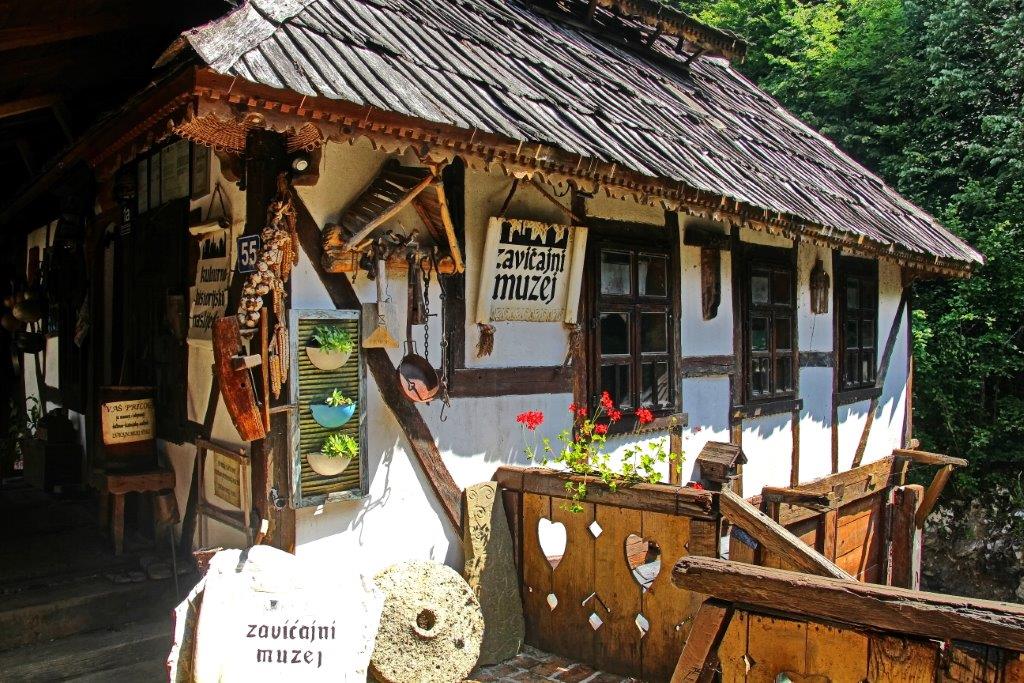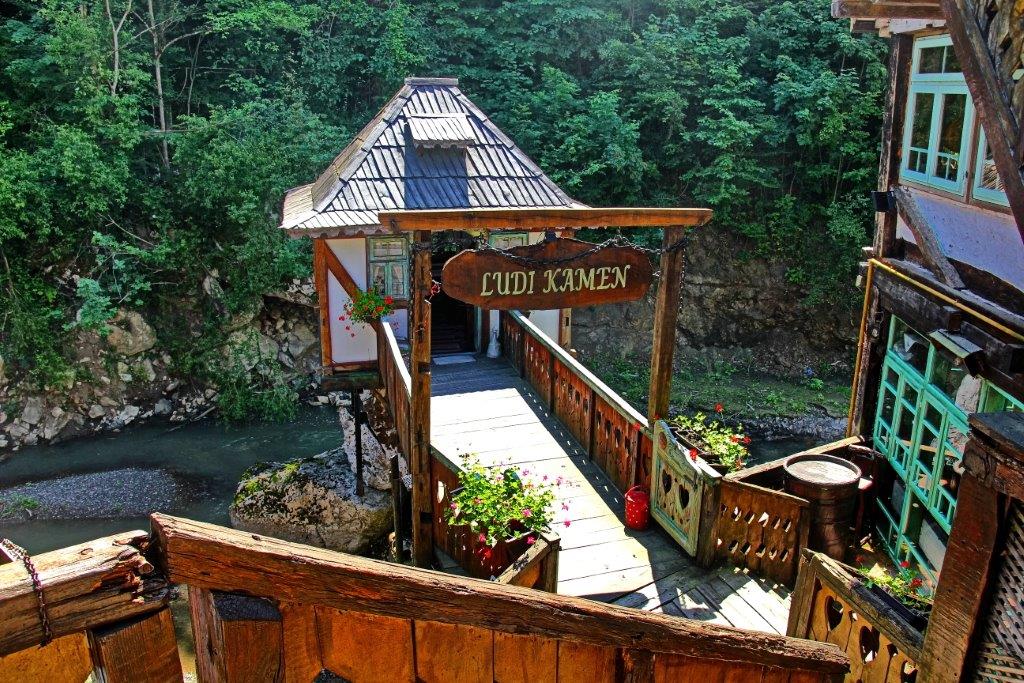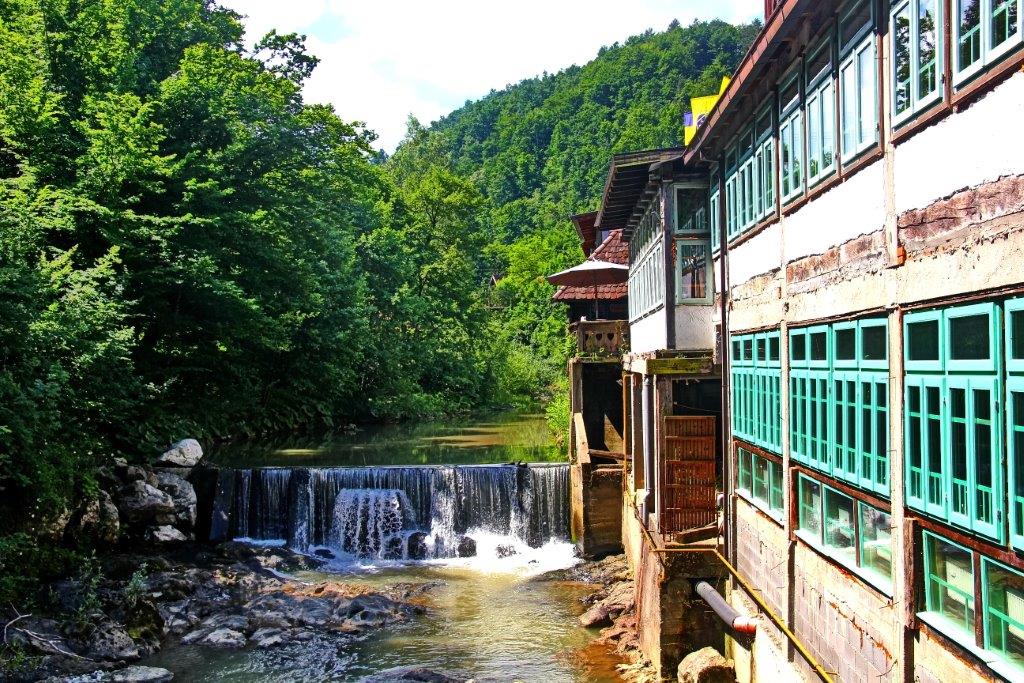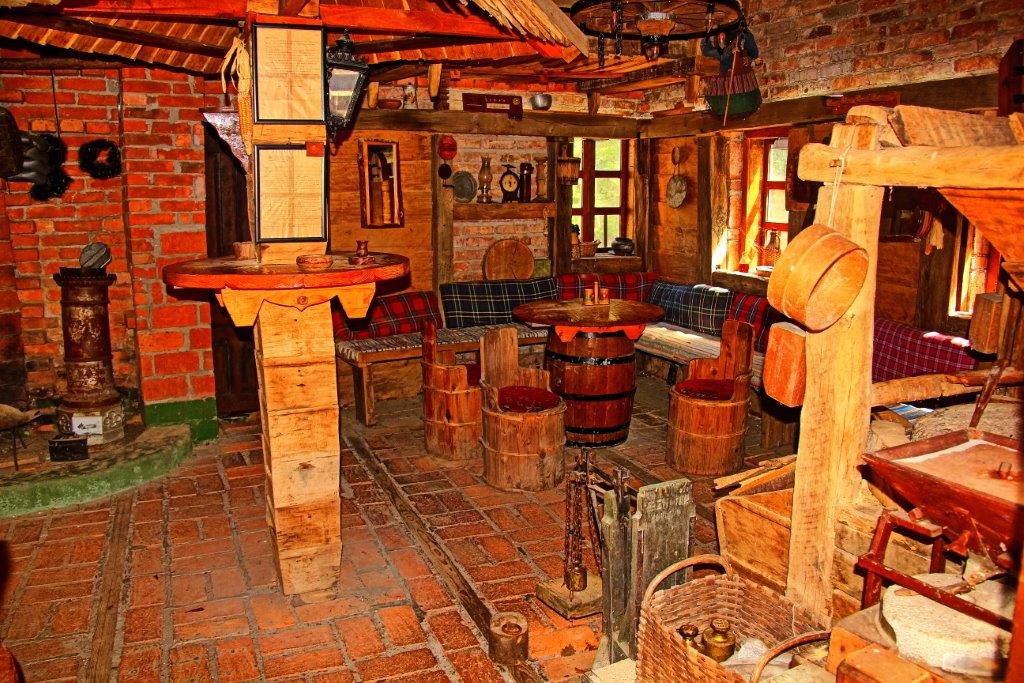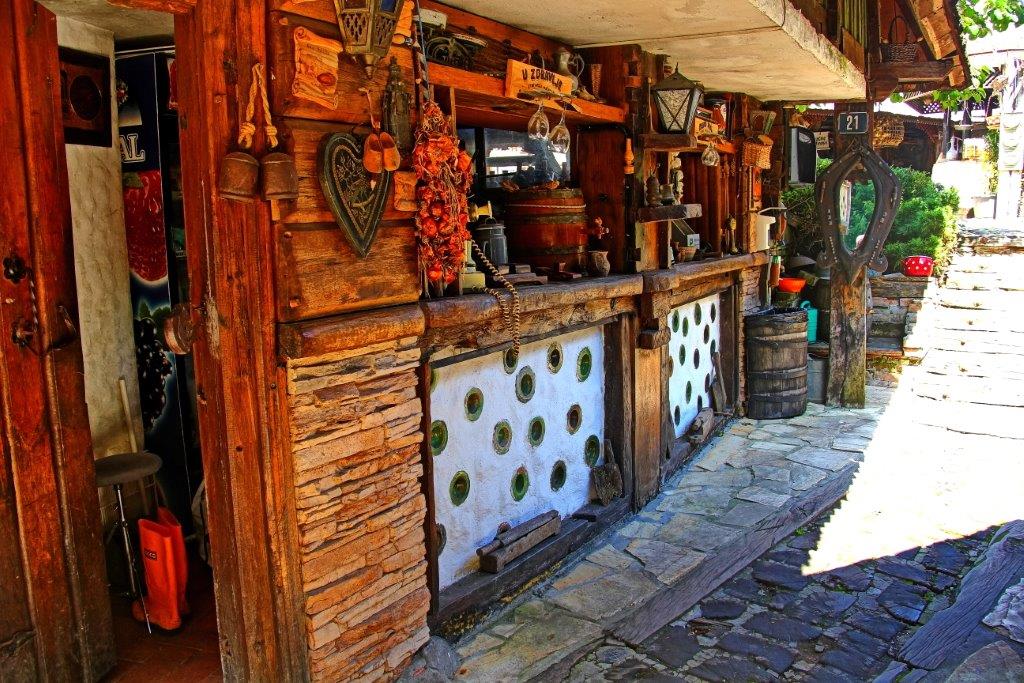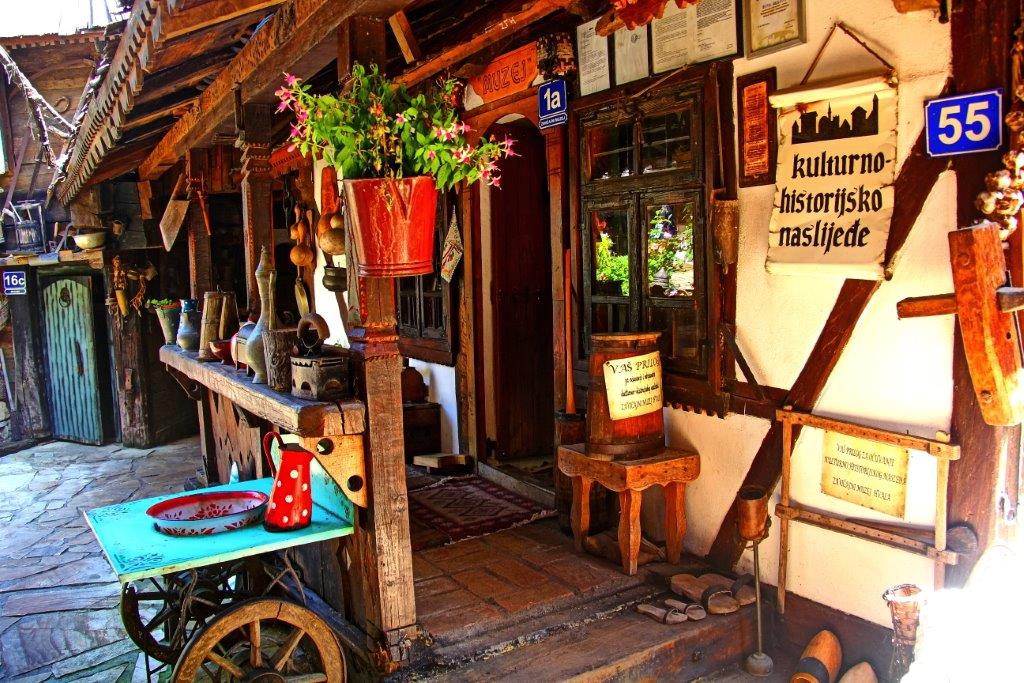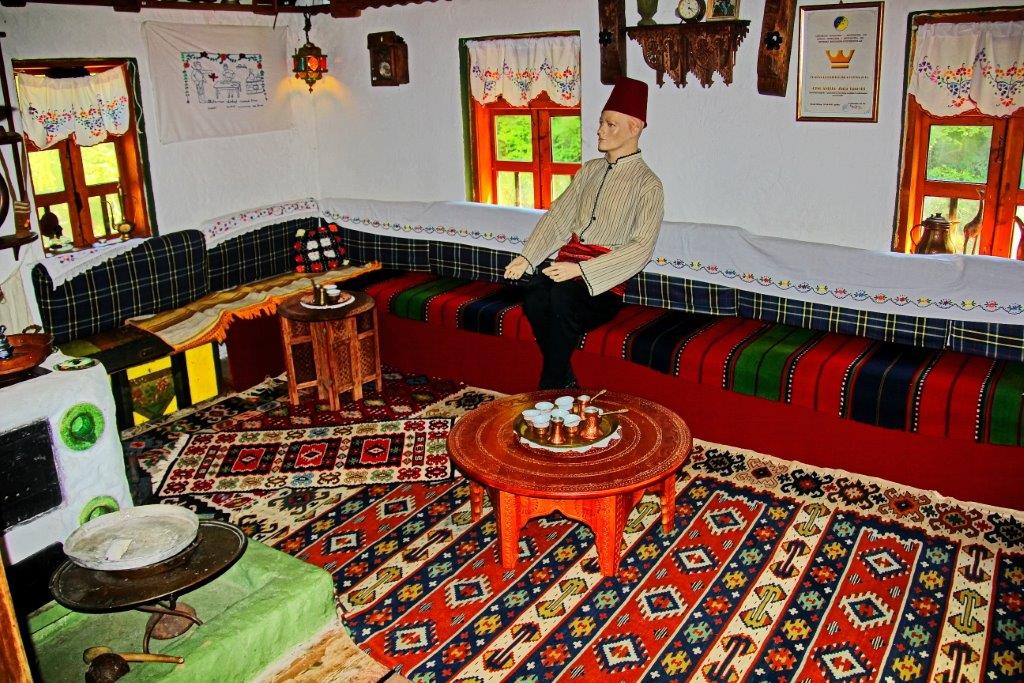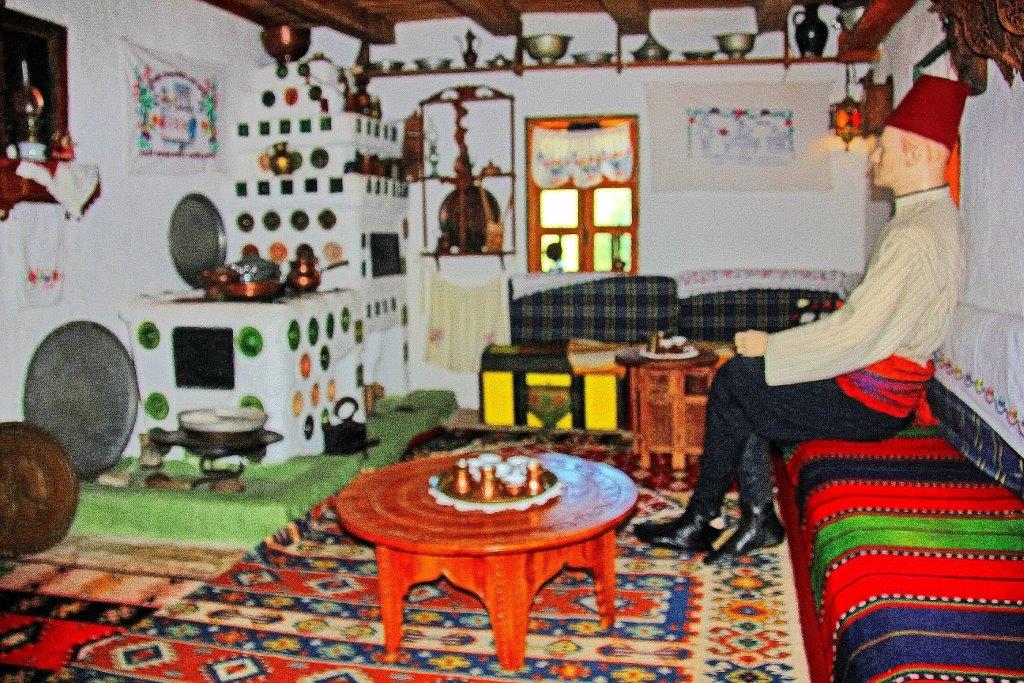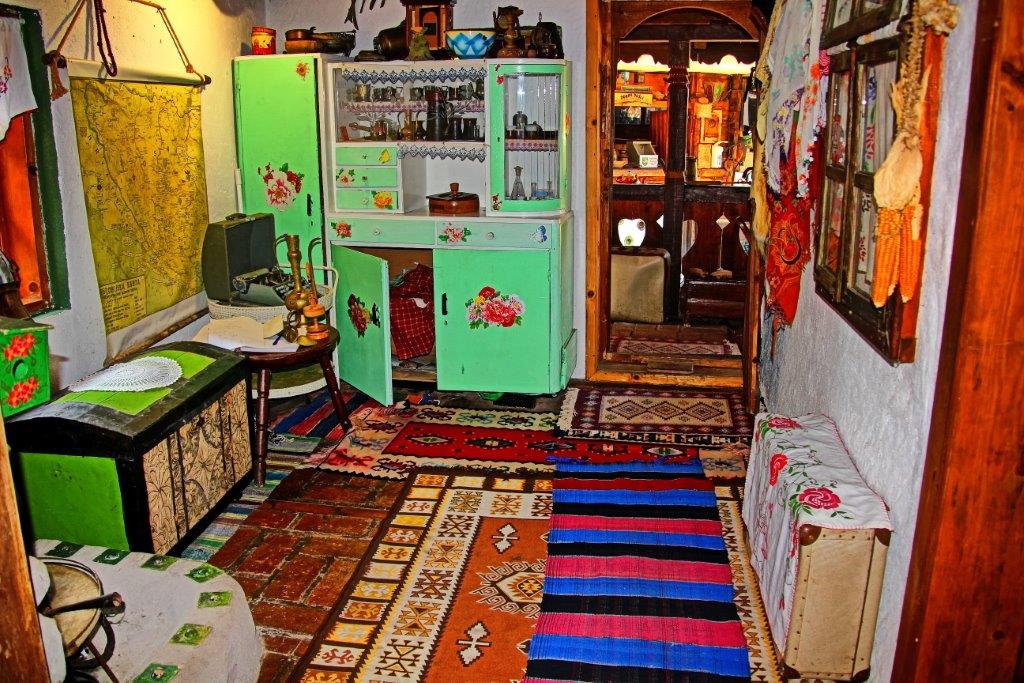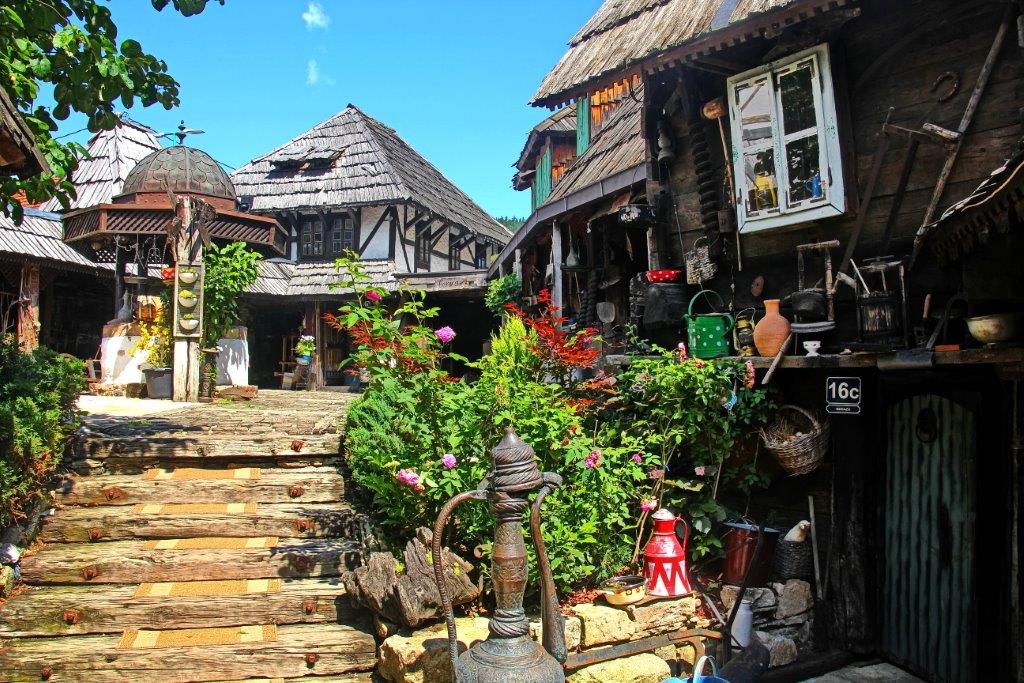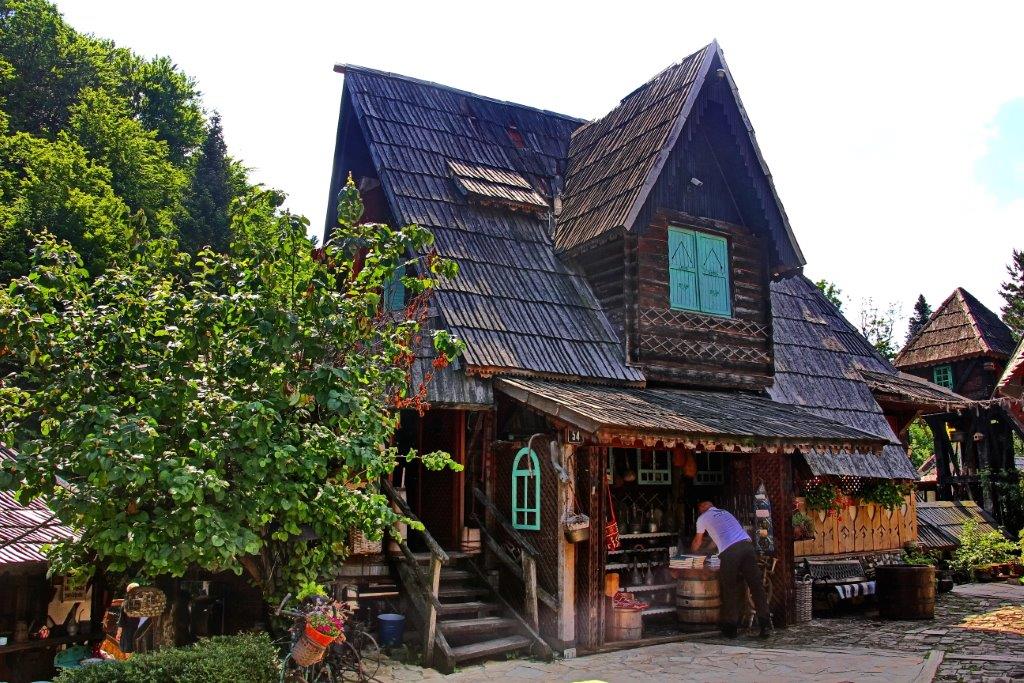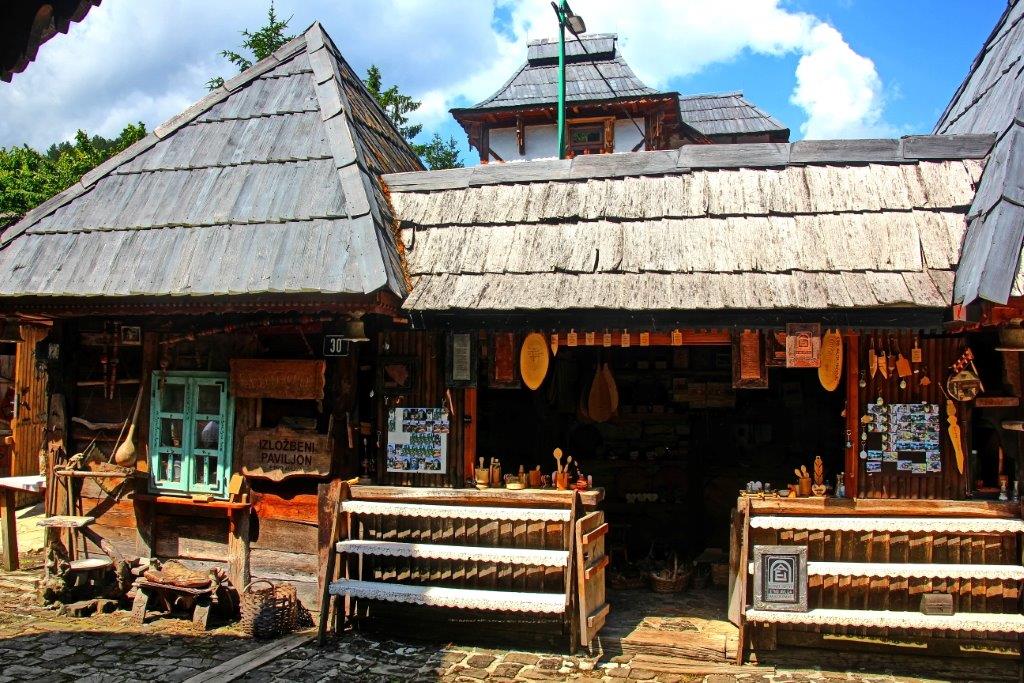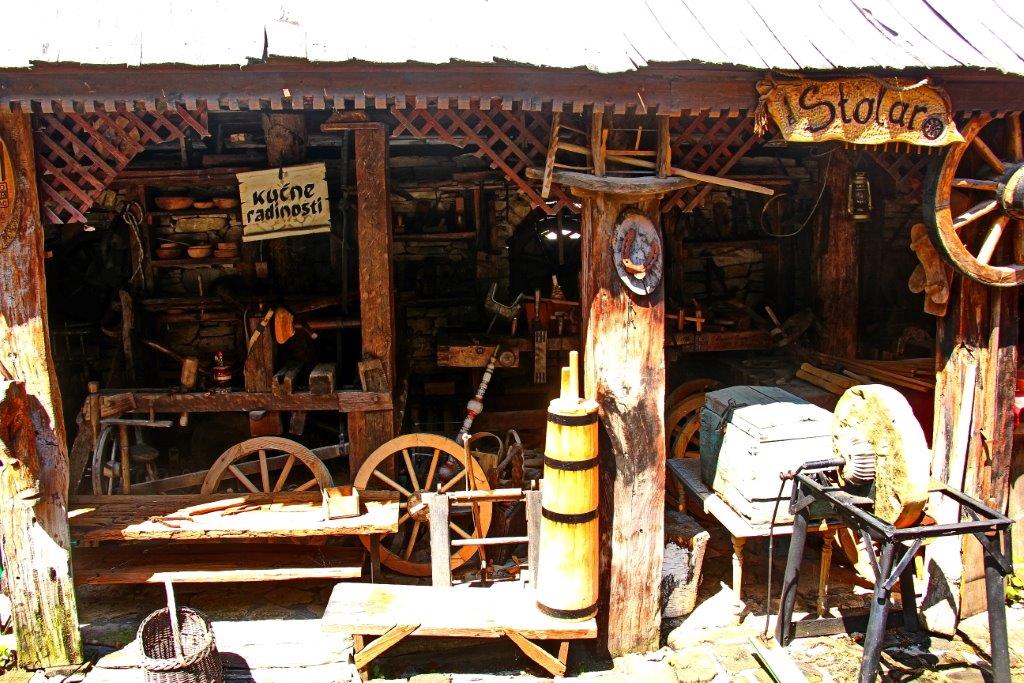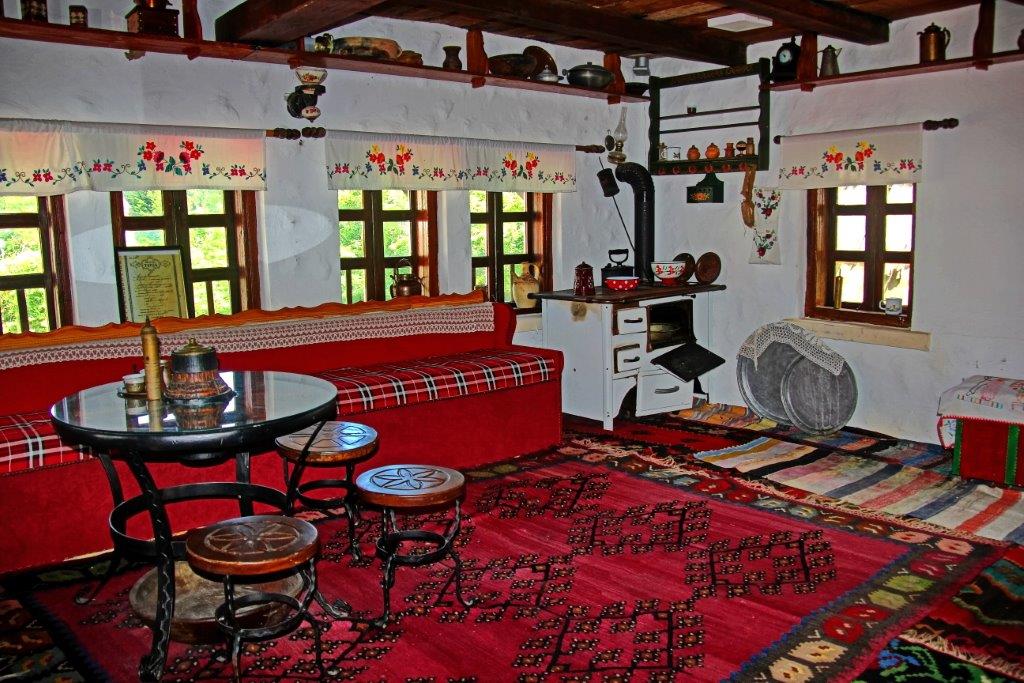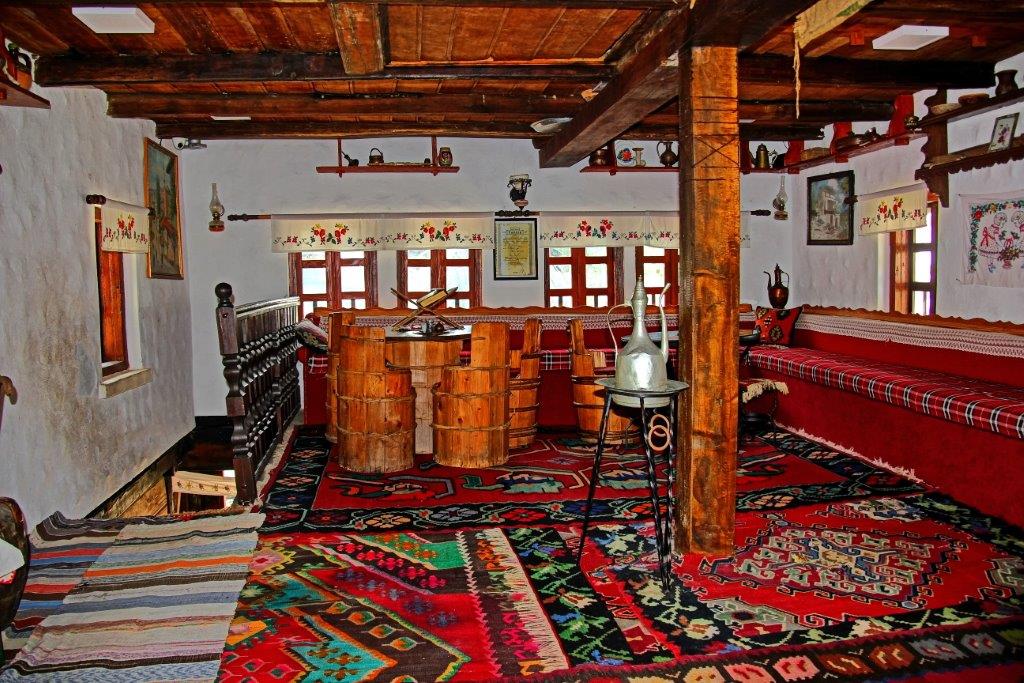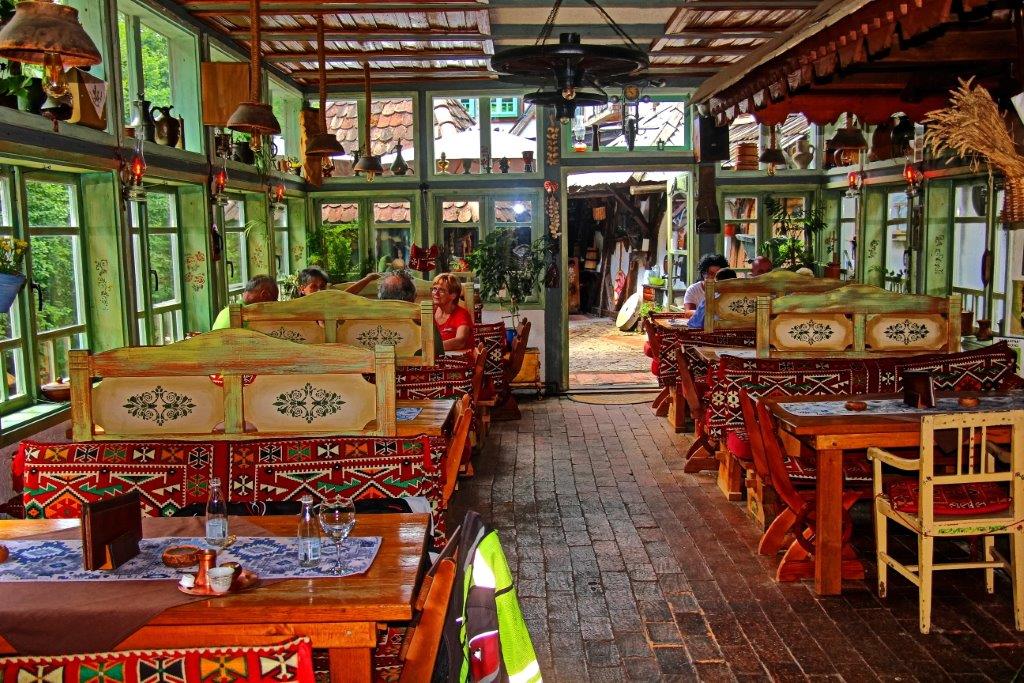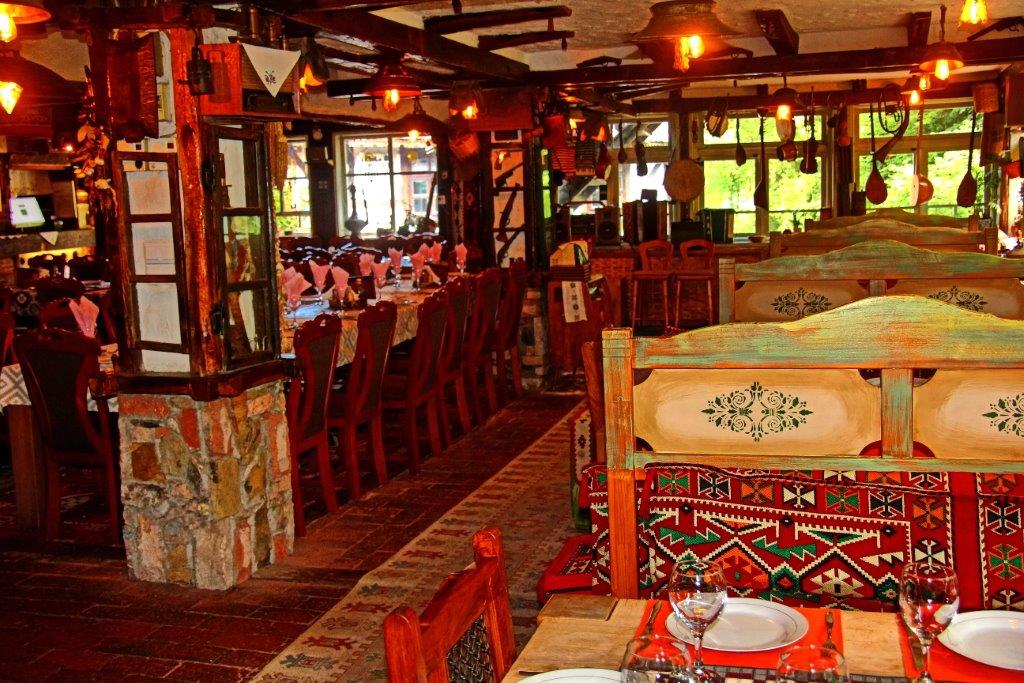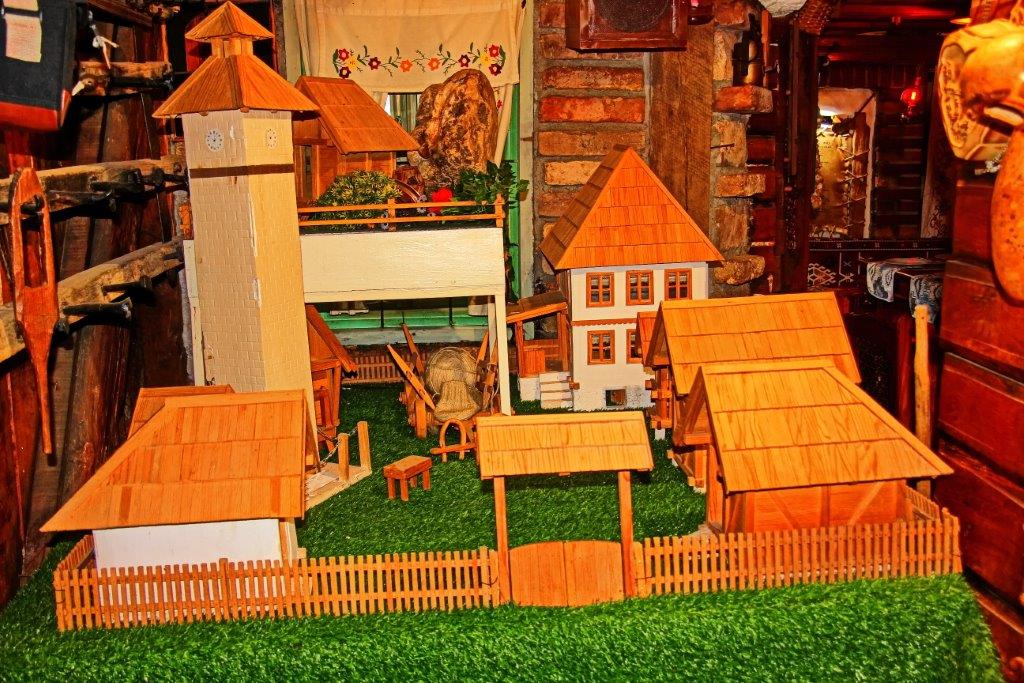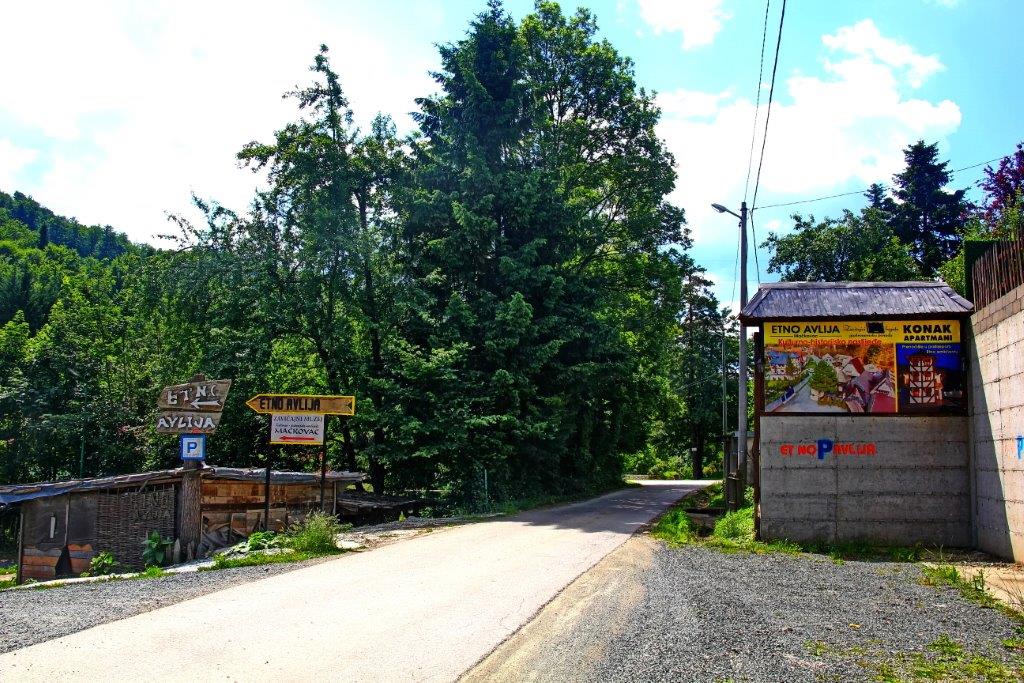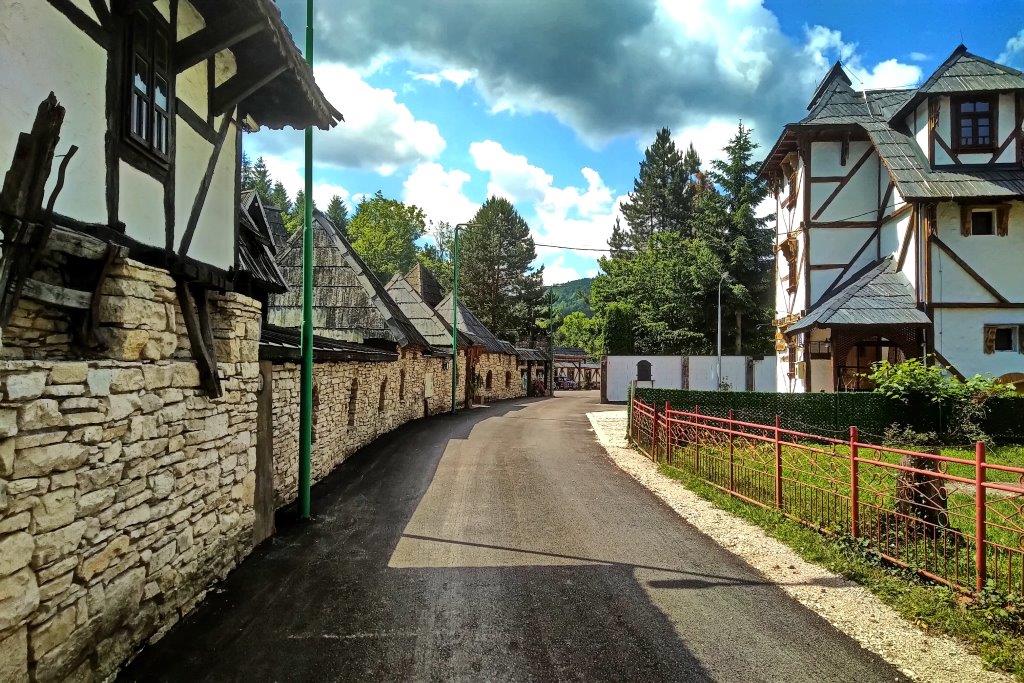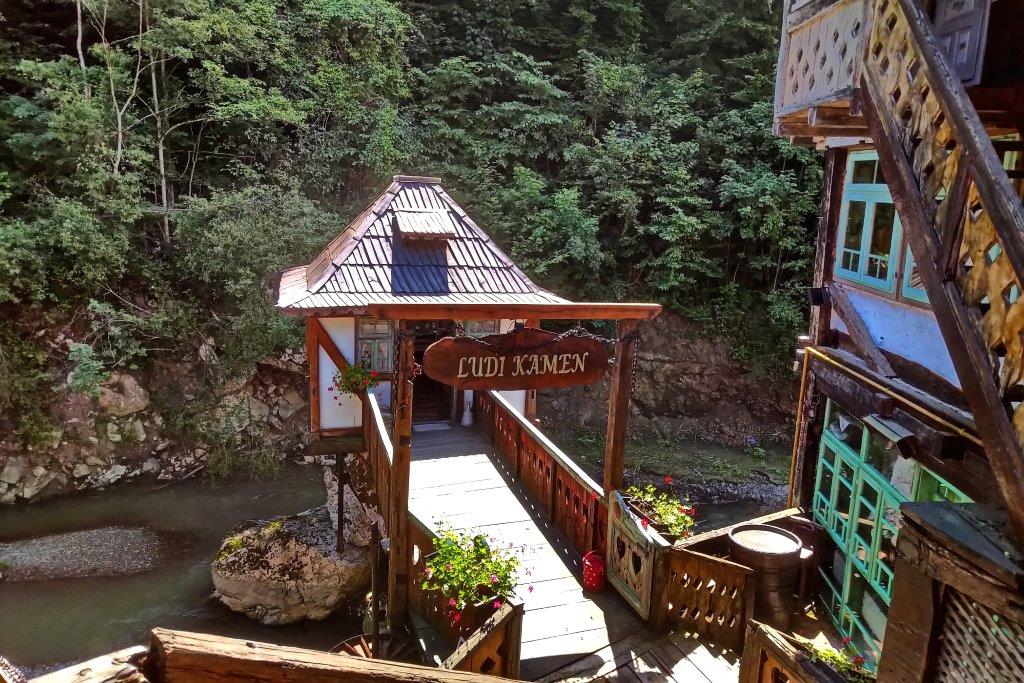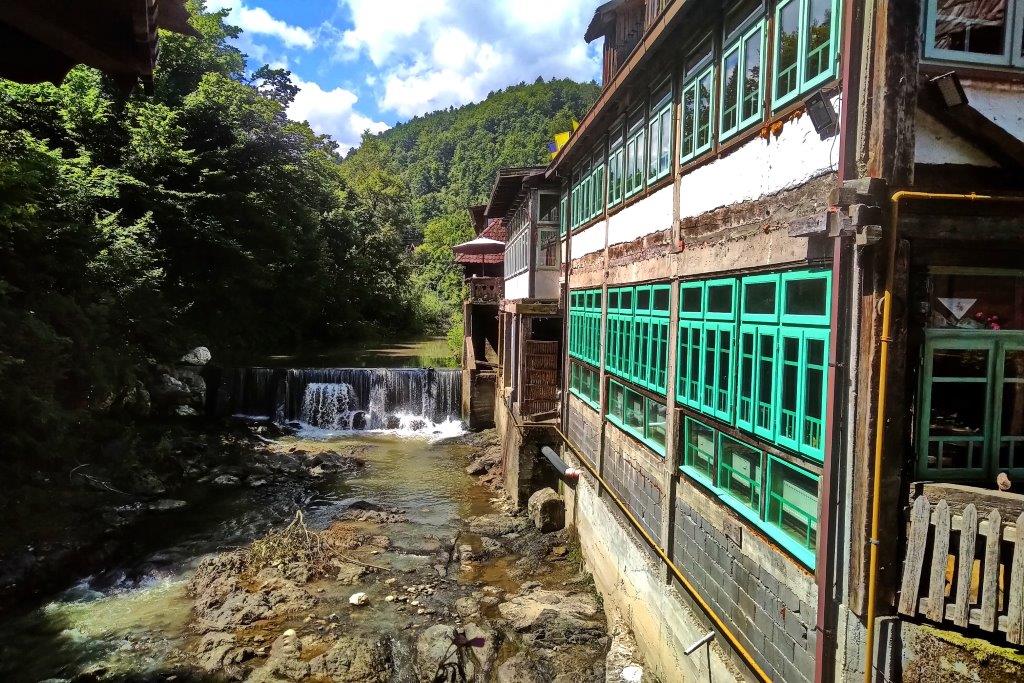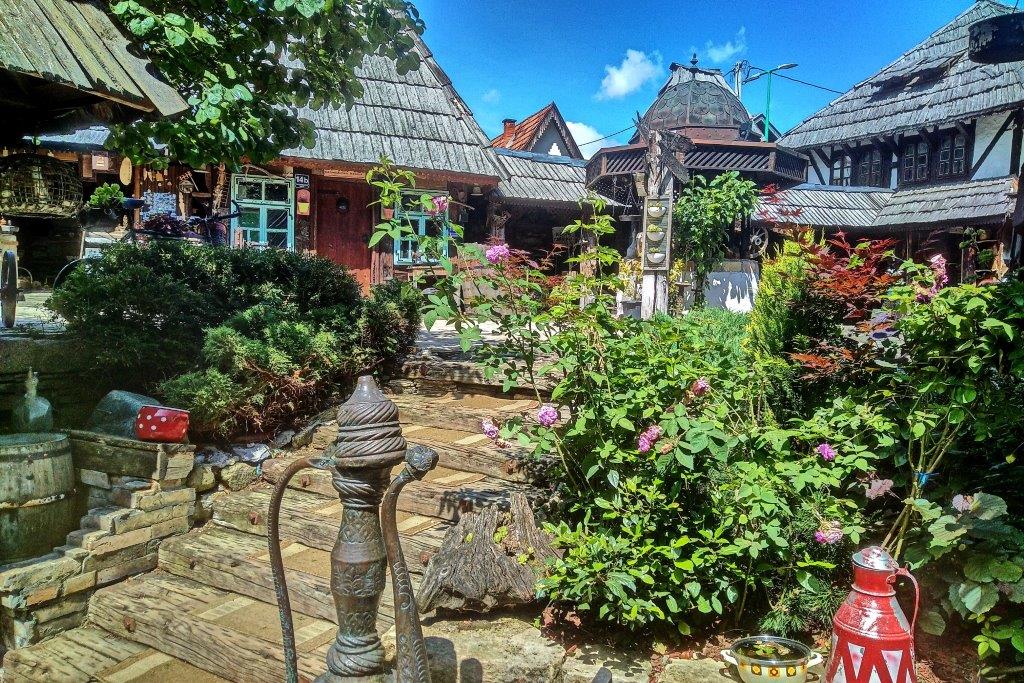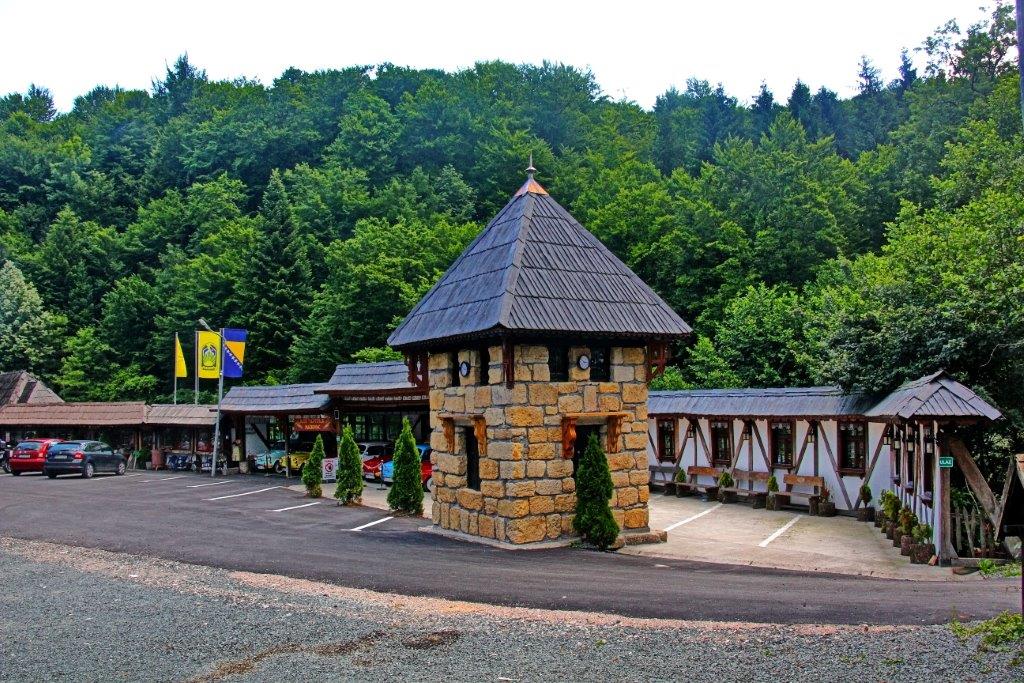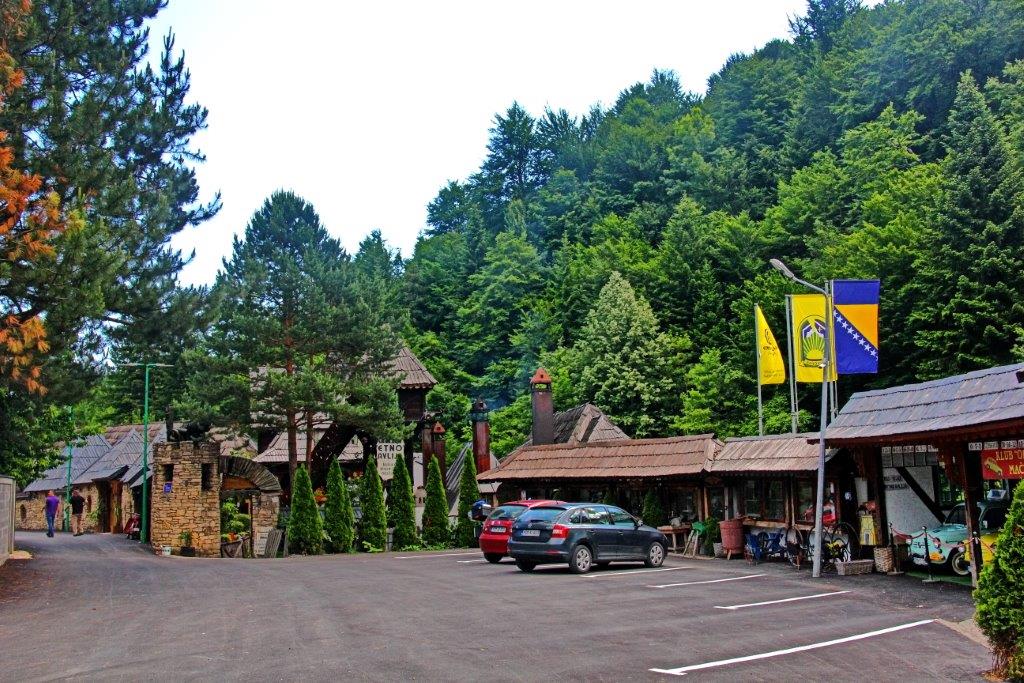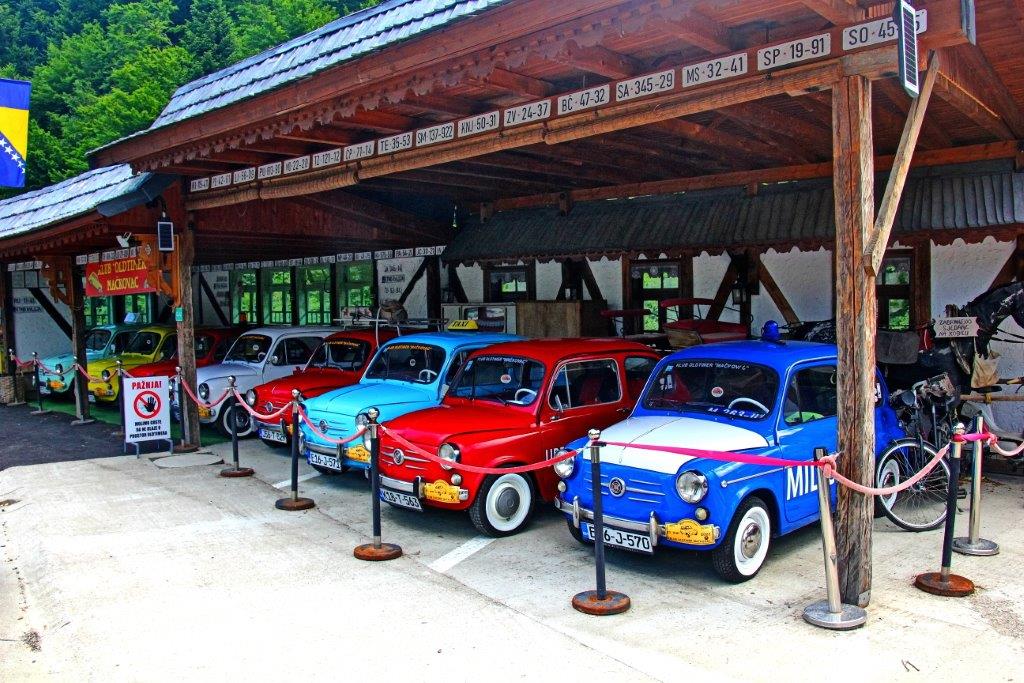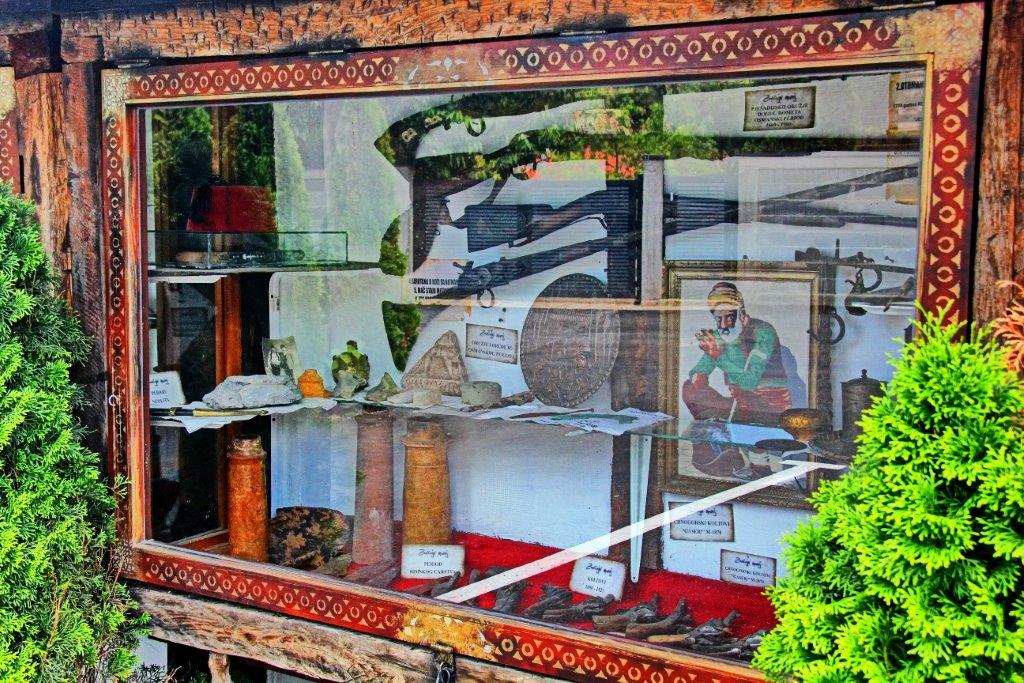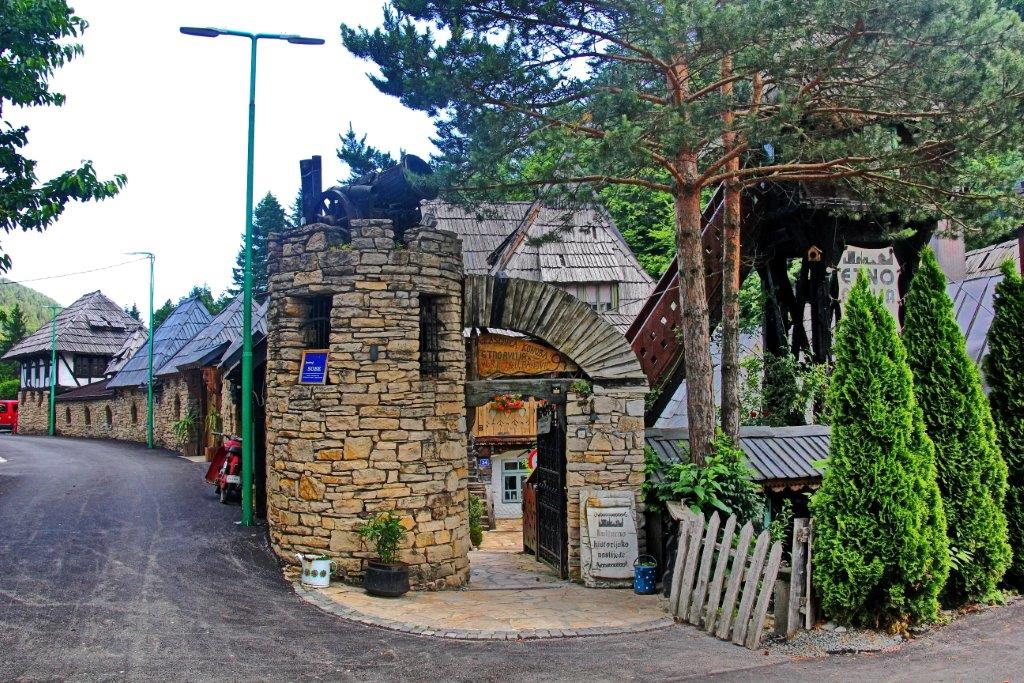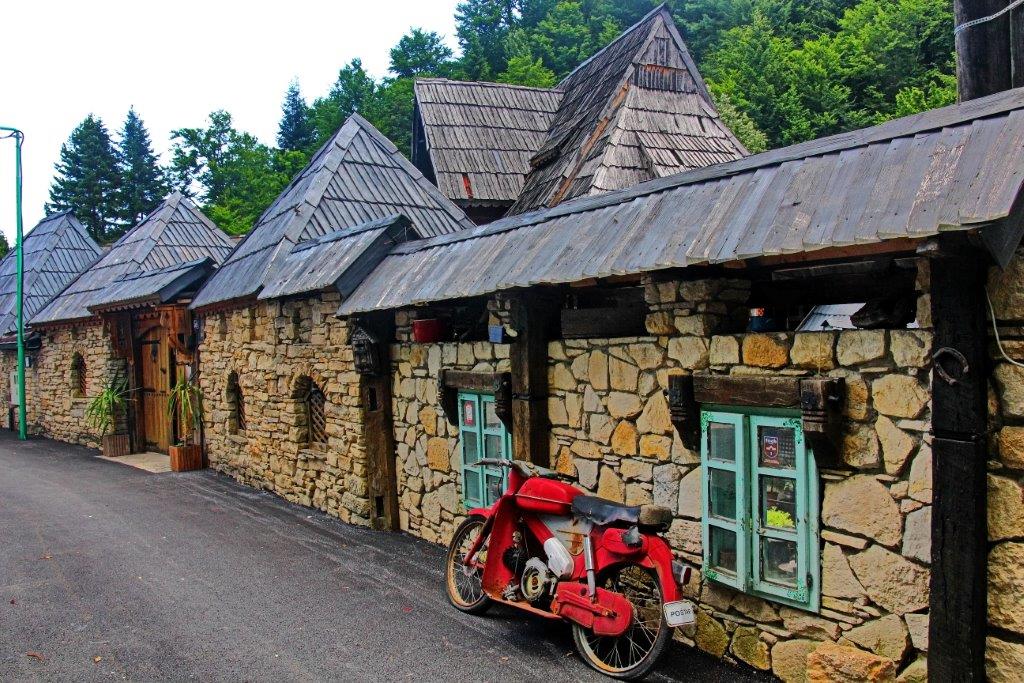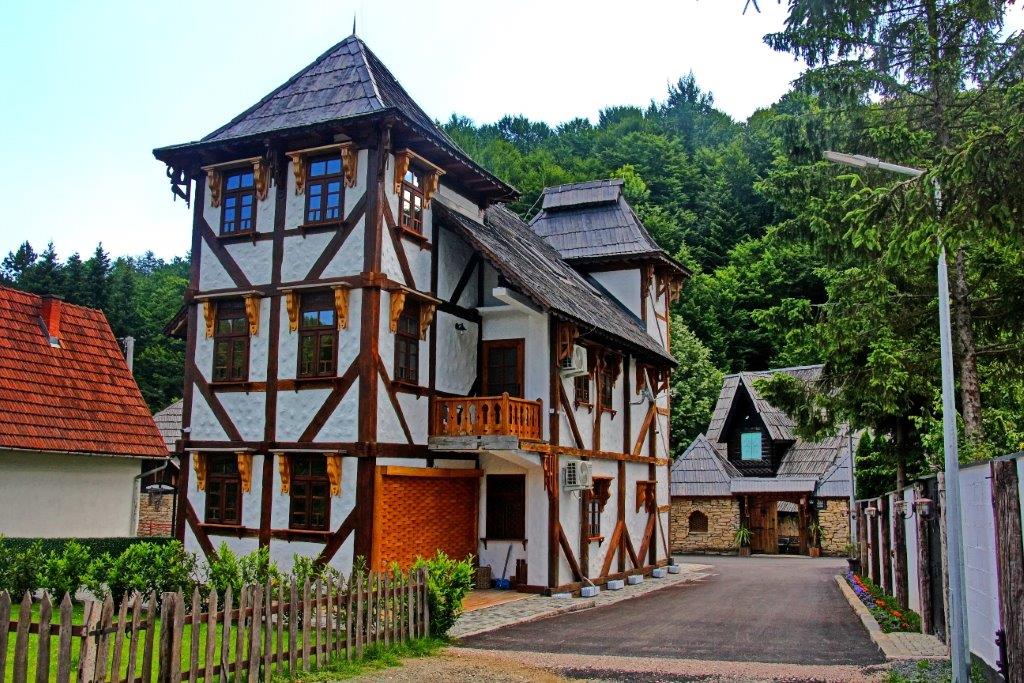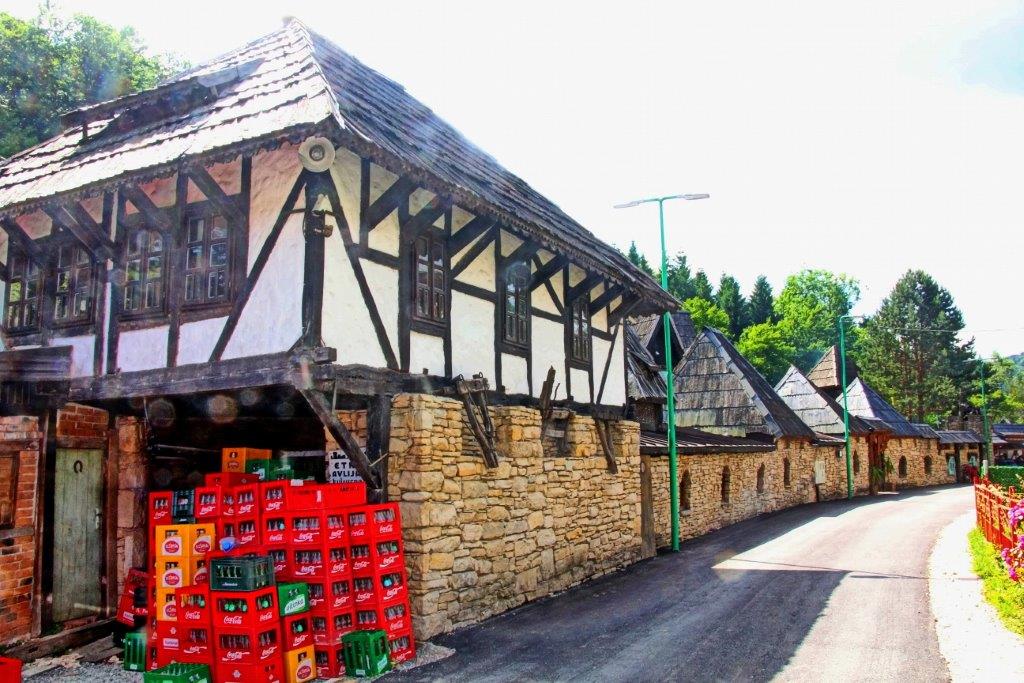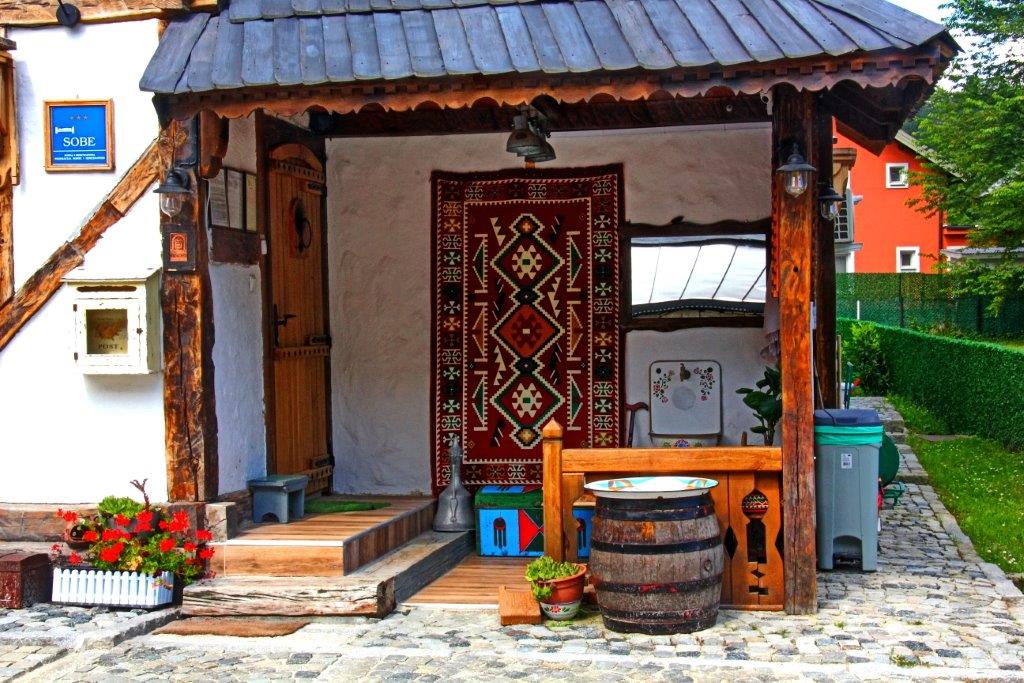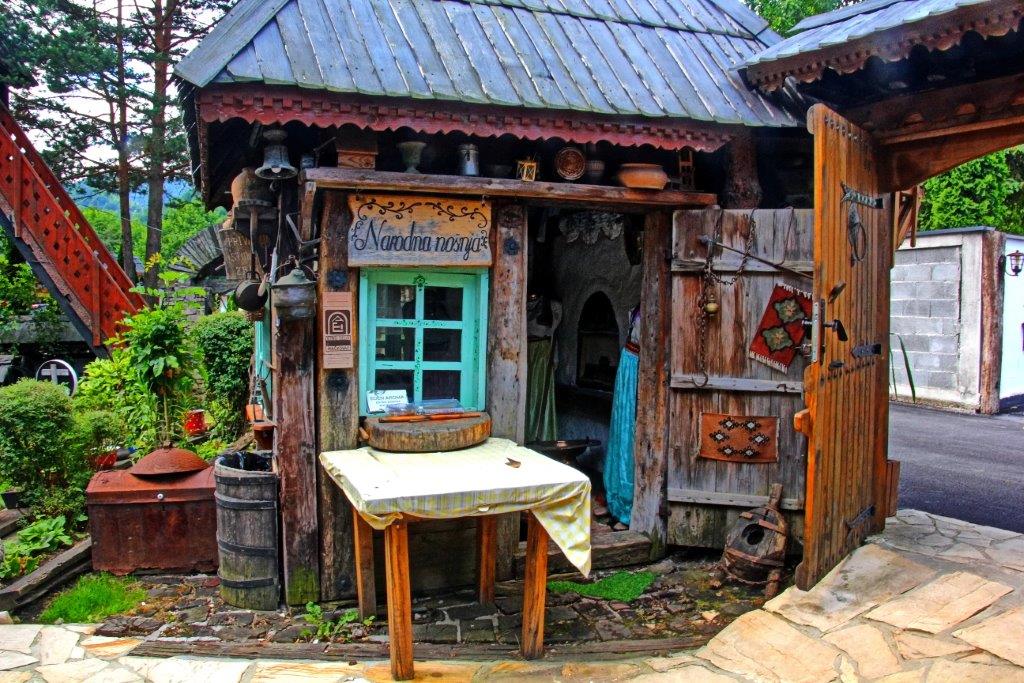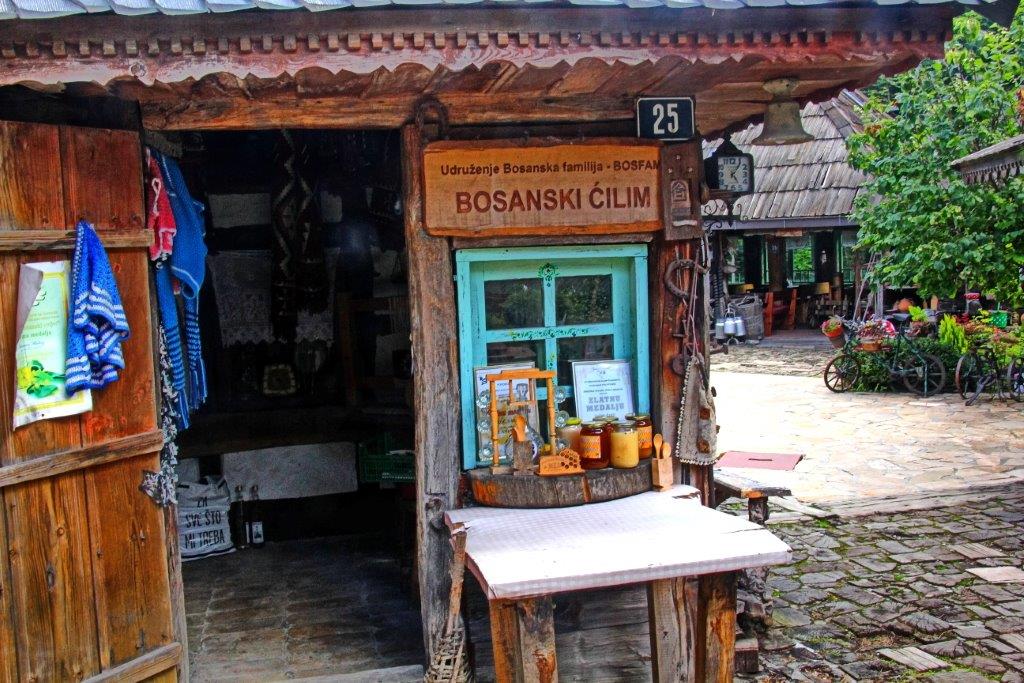You will reach the Mačkovac Ethno Garden by a winding road from the direction of Banovići, after only five kilometers of driving through a dense forest, along the river Oskova towards the interior of the Konjuh Mountain. There you will find a small museum under the open sky, along with a restaurant with a top gastronomic offer and accommodation facilities. When you step into Ethno Garden, you will have the feeling that you have returned at least a hundred years into the past.
In a typical Bosnian environment, you will see old Bosnian houses, mills, workshops and other supporting facilities, and more than ten fully equipped craft shops, all as they looked once upon a time.
The collection of several thousand authentic old objects that were used in the households also contributes to this atmosphere. Here you can try traditional Bosnian dishes directly from the open fireplace and drink coffee in an old-fashioned tavern, and with the sound of water and the chirping of birds, wander back to ancient times.
Old books
The place was created based on the idea of owner Refik Halilović in 2010, who always tries to listen to the needs of his guests and offer them top-notch service. Several collections of various objects of the collector Fikret Ibrišimović are on display in the Ethno Garden.
He explained that, among other things, pocket watches are on display, and they originate from the period of the Ottoman Empire until the Second World War. The collection contains different brands of watches, 25 of them, which are in good condition. Among other things, you will find items for everyday use made of copper, silver, wood and ceramics. Handicrafts, embroideries and tapestries always arouse special admiration, and the more than 1,600 old books, documents and records that make up the 200-year-old collection are certainly worthy of attention.
Each object has its own story, which takes us back to a long, unknown time, that which still lives here in a way, in this Garden. Visitors can see old decorative objects and handicrafts from that area of Bosnia and Herzegovina, among them are kettles, flutes, coffee pots, coffee cups…
If you want to take a piece of this time with you, there is many souvenirs available in the form of a pipe, mouthpiece for smoking or hookah, various dishes, typical musical instruments or simply a watch or a pendant. And so, the old Bosnian ways of life and customs continue to survive, surrounded by centuries-old trees, water courses and the breath of nature, waiting for new generations to pass them on to future generations.
For all those who are curious, there is a Native Museum that contains more than 30,000 exhibits, including Bey’s, Buka’s and Adin-bey’s house, with all the accompanying objects from the past times, old furniture, bathing vessels, various objects and tools that were used for work in home and around it.
The setting from the period of the Ottoman Empire consists of various items from the field of military and utility items, used on the territory of Bosnia and Herzegovina. The most important items in this collection are three Ottoman rifles, which originate from the 16th, 17th and 18th centuries. A rare Ottoman plaque, decorative objects in copper engraving, objects in silver and gold embroidery, gunpowder in leather…
Bey’s house
In addition, objects from the Second World War, from the field of military affairs, belonging to the 13th SS Division, popularly known as the “Handschar/Handžar Division”, are on display. Musical instruments belonging to the German military orchestra are also on display.
A collection of badges from the period of the former Yugoslavia was also presented, and there are more than 4,000 units. The badges are sorted and belong to different areas (mountaineering, sports, fishing…). Most badges are made of enamel, and there are also silver ones. Among the exhibits are badges from the period before the Second World War.
Bey’s house is from 1966, the movie “Ugljar” was filmed there, and there is also an ethno cinema. Bey’s house was located in the neighborhood, so it was transferred and became part of the complex. Minor corrections were made during the transfer, but it retained its original appearance. Various items are exhibited in it, including bridal garlands (150 of them are on display in Ethno Garden), sofas decorated with fabrics, metal containers in which the embers are placed, water pots…
A place to sleep over, Konak-Musafirhana, was built two years ago, which made this open-air museum more complete. It was built in a retro style, from natural materials, as was done in the past, and the interior is equipped with a modern way of living, of course it has all the necessary infrastructure both in summer and in winter.
The facility attracts the attention of visitors and guests with its appearance and functionality, and many people book overnight accommodation here. The price per person is BAM 50, so only BAM 5 more than in the Zlača Hotel with a much higher level of service, so the Ethno Garden is an excellent starting point for trips to the Konjuh Protected Landscape and the Zlača Canyon. The complex is suitable for organizing various activities and is often the location of weddings.
Author: Tarik Dreca


